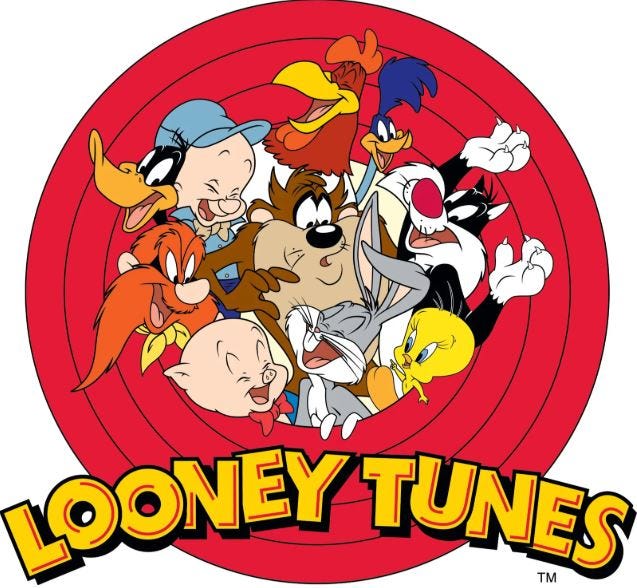Looney Tunes
He quickly learned to push the lever, as well as several other tricks, with me using only positive reinforcements. Later on I tried the same methods on my kids, and had much poorer results. I found that negative reinforcements were necessary, and even then the results were dubious at best. But I did find the methods worked quite well in directing young engineers. — ‘Whatever Happened to Algernon?’, The Einganeer’s Line, December 12th, 2024 blog
I also regretted having learned from my father (who had a mental breakdown in his fifties) how to (and not to) siphon gasoline by sucking on a tube. — ‘An Einganeer’s Tale’, page 38
Remember when Warner Brothers’ Looney Tunes was the most popular show on Saturday morning television? Being a kid, I didn’t realize that Looney was really a derogatory term for Lunatic, which also meant Insane. I thought it was funny when my father would jokingly threaten to send my mother to the Looney Bin. It wasn’t so funny when, years later, we actually did consider sending my father to one.
I recently learned that Looney Bins (aka. insane asylums or state hospitals) were not always places of torture, neglect, diabolical medical procedures, restraints, and confinement. In fact, most were founded during the nineteenth century to practice a very humane technique known as Moral Treatment.
Moral Treatment involved treating individuals with kindness, dignity, and respect, while also providing opportunities for occupational and social activities in a clean, comfortable, home-like environment. It was believed that Moral Treatment would eventually cure an individual’s mental illness, and should be continued as long as necessary, even if for the rest of a patient’s life.
In many cases, Moral Treatment did appear to cure patients, but many also were not cured. Continuing their treatment eventually led to overcrowding and spiraling costs. Then, the rise of early twentieth century thought — concerning psychiatrics, Freudian psychology, and eugenics — led to other attempted means of curing the incurable, and eventually displaced Moral Treatment completely. Its successes, however, were no better than that of Moral Treatment, and in many cases, worse. The mentally ill population continued to grow.
By the late 1960s, most mental illness professionals had given up on Looney Bins. All state psychiatric hospitals would be closed over the next thirty years, and their patients “deinstitutionalized”. Communities themselves would be left to deal with mental illness through assimilation and local health care facilities. It would be another twenty years before metal illness would truly be considered a health concern.
Treating mental illness now seems to have largely evolved to prescribing the right cocktail of medications. There is no doubt that medications have brought balance to many individuals who have displayed mental illness behaviors; thereby, enabling them to lead full, productive lives, despite each medication’s disabling side-effects. But, how many of these individuals might have also been cured through natural, less invasive, Moral Treatment techniques? We will never know.


